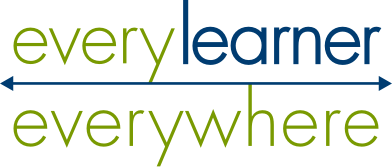Putting equity at the center of teaching and curricular and technology decisions in higher education is essential to closing opportunity gaps for minoritized, poverty-affected, and first-generation students. But those changes won’t be effective if students continue to be evaluated with the same approaches to assessment that were part of creating inequities in the first place. In short, equity-centered teaching and learning requires equity-centered assessment.
For example, suppose a revised course curriculum covers previously overlooked history about marginalized populations and uses recent cultural texts familiar to current students. The discussions and creative projects in this course invite students to make connections between the course content and their lived experience, and the curriculum de-centers dominant perspectives and signals to students that a range of perspectives, reference points, and ways of knowing is welcome.
However, it may be that unrevised high-stakes assessments for the course rely heavily on memorized facts and multiple-choice questions, and taking the test requires students to have access to particular computer hardware at particular times. While the readings, discussions, and other activities previously clarified the relevance of the course content to their learning goals, the exam sends very different signals. How the exam will be used is unknown to the students, the relevance to their goals isn’t clear, the stakes emphasize a power relationship that class discussions may have minimized, and how it is administered potentially creates a new access gap for some students. In this hypothetical case, the equity-centered curriculum has been undermined by the assessment.
What is equity-centered assessment?
Equity-centered assessment is an approach that prioritizes giving every student a way to demonstrate their learning and uses the results of assessment in ways that further equity. It draws on content, formats, methods, and tools that make sense for all students, regardless of their cultural or personal background. It seeks validity not through uncritical consistency but through transparency, choice, flexibility, and personalization that result in better information about how every student is learning.
Aside from how equitable the content and format of an exam may be, equity-centered assessment is also concerned with how exams are reported, analyzed, interpreted, and used. For example, data showing a gap in outcomes between one population and another can be interpreted from a deficit lens that emphasizes the responsibility of students and minimizes the responsibility of the institution. In contrast, the same data can be interpreted from an assets-based lens that looks for the strengths students have and that adaptive faculty and institutions can build on.
Specifically, equity-centered assessment:
- reflects on potential biases in the design of exams and other assessments;
- treats students as experts in their own experience;
- engages students as stakeholders in the design of assessment activities;
- gives students an opportunity to define their learning goals;
- gives students an opportunity to describe what they’ve learned in their own language;
- disaggregates data to reveal the homogeneous learning experiences hidden within aggregated reporting; and
- Reflects on potential biases in how the results of exams are interpreted and used.
Equity-centered assessment research and resources
One excellent starting resource for getting started on equity-centered assessment is a worksheet by Anne E. Lundquist and Ciji A. Heiser that guides educators through prompts such as:
- Consider the power, positionality, and agency of the assessors, the participants, and the people using the results.
- Engage students in the design of assessments and how results will be used.
- Make assessments specific to your institutional context.
- Draw on non-dominant approaches that shift power dynamics, such as universal design for learning and Indigenous research methods.
- Examine the underlying theory of standardized surveys.
- Consider multiple methods to demonstrate learning.
- Disaggregate student data.
Texas A&M University’s Office of Institutional Effectiveness & Evaluation provides a list of questions for educators to ask themselves when developing equity-centered assessments. These include questions regarding outcomes, methods and data collection, analysis, and sharing and use of results.
An article on Student Affairs Assessment Leaders (SAAL) discusses the recent work of the National Institute for Learning Outcomes Assessment (NILOA). NILOA and its partners launched a series of case studies on colleges and universities conducting their own equity-centered assessments. This work is also based on NILOA’s January 2020 publication, A New Decade for Assessment: Embedding Equity Into Assessment Praxis.
Some of the case studies in that report include Cornell University, which used Ripple Effects Mapping to gather ideas and concerns from all students for their assessment process.
The University of Pittsburgh’s Center for Teaching and Learning provides a resource to its faculty with practical tips to educators on how to make their assessment more equity centered.
What are the benefits of equity-centered assessment?
Equity-centered assessment confronts the tension between standardized tests and the variability of student experience before and during a course.
It also confronts the tension between the goals that faculty may have and students may have for themselves. When students have goals for their learning that aren’t shared by the institution or by instructors, that’s not a recipe for equitable learning.
By using interpretive approaches to exam results that illuminate student strengths as much as their deficits, equity-centered assessment can help adaptive and innovative educators identify assets to scaffold teaching and learning from.
Similarly, by casting a critical eye on reported data that aggregates large populations of students, equity-centered assessment will illuminate the hidden heterogeneity in an institution.
Finally, the results of equity-centered assessment can be used to advance conversations about and work to further equity, rather than to reinforce existing narratives and status quo procedures.
Read more practical recommendations in the Caring for Students Playbook

